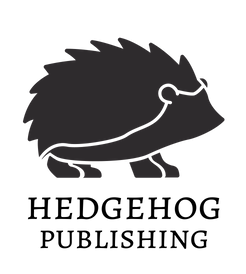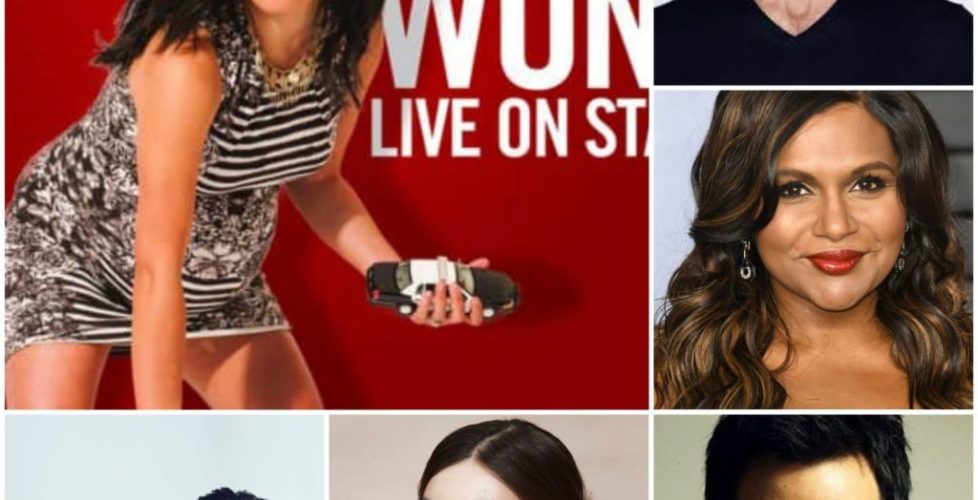Kathryn Tse-Durham: Please, Enough of the Dragons! – My musings on Asian Representation in Media and Literature
There was a time when my love for art eclipsed my love for books. When I was studying at an international school in Hong Kong, I had a brilliant art teacher named Mr Buck in Grade 10. It’s true what Maya Angelou said: at the end of the day, people won’t remember so much for what you said or did, but they will remember you most for how you made them feel. Mr Buck made me feel seen. He treated me like an individual whose ideas and work had something to offer the world. Best of all, he made me realize how cerebral and exciting art can be, and for a time I dreamt of becoming an artist. We need more teachers that inspire us to dream, don’t we?
Our school had a very internationalized student body, so I never felt out of place. Having grown up as part of the Chinese diaspora in Australia, I was a third-culture kid, and my Chineseness was never something that stood out at my school. Those were happy days. So I was very sad when I had to move back to Australia for boarding school. It was a difficult transition, and for a time things turned dark and lonely. As if things couldn’t get any worse, my new art teacher, Mr V, was nothing like Mr Buck, whose class I missed terribly.
Mr V took me aside during class one day and held up one of my ink drawings, an intricate sketch of a strange, Dali-esque contraption. It was just a doodle really, but he seized upon it for an important revelation as he fixed his intense blue eyes on me. “Listen, you have excellent technique. You have extraordinary skill. That is not up for dispute. But you have to produce art that reflects you. Your culture, your background, your upbringing. Your art has to mean something. Look at these, and you’ll see what I mean.” My throat seized up as he showed me sketches drawn by a fellow student, who, like me, was of Chinese descent. These were pencil sketches of sinewy, bulgy-eyed, snarling dragons like those frequently seen on traditional Chinese paraphernalia. Mr V looked at my bewilderment sympathetically and patted my shoulder. “Spend some time thinking about what reflects you, and we can talk more then.”
After that, I dreaded art class.
This sort of pervasive and presumptuous labeling and stereotyping contributes to how Asians are represented in popular media and literature. So many films and books I’ve come across represent Asians in a very narrow light, often against a clichéd backdrop of culture and festivals and folklore. This is especially true in children’s literature. In films, the Asian is often the one-dimensional sidekick depicted as a martial art enthusiast or bespectacled nerd who’s inevitably relegated to the friend zone by the attractive (and often white) protagonist.
Asians, like everyone else, come in all gloriously sized and shaded packages. Asians are not all yellow-skinned as depicted in traditional Western media. Some of us can be as white-skinned as the fairest, easy-to-sunburn Caucasian – like my baby daughter, whose beautiful white skin is so pale that I’ve nicknamed her Snow White – or as beautifully brown as Priyanka Chopra, who is considered one of the most gorgeous women in the world. Asians come in a wide range: Chinese, Korean, Japanese, Vietnamese, Fillipino, Burmese, Thai, Nepalese, Cambodian, Indian, and more. Most of all, Asians come in a myriad of personalities, with different quirks and talents, strengths and weaknesses. We don’t all like kung fu or sashimi; not all of us are good at math and science; nor is every Asian unquestionably filial and submissive, and we are not always shy and nerdy wallflowers. If you look around and really see us, you will notice that Asians can be tall and muscular, hot and curvy and sexy; we can be cool and witty and charismatic, artistic and creative and desirable.
Ann M. Martin was one of the first Caucasian writers back in the eighties to represent Asians in a more diverse and unconventional light when she created the character of Claudia Kishi, the popular, artistic, and fun-loving Japanese-American girl who, to this day, is considered by many readers to be the coolest character in The Baby-Sitters Club. That’s the type of representation we need more of in literature and the media. Asians are a diverse bunch of individuals with so much more to offer than good grades, kung-fu, fortune cookies, and accented English.
Because I am a fun and loving wife (husband rolls his eyes), I accompanied said husband to nearly every Marvel film in the past decade. It has struck me just how under-represented Asians have been in all these blockbuster movies, and it makes me wonder why we are given so little time of day. I mean, there are so many excellent Asian actors. And many are as photogenic as their Caucasian counterparts, if not more so. What are we missing?
After Black Americans celebrated Black Panther, Asians are finally getting their very own Marvel film called Shang Chi and the Legend of the Ten Rings, starring talented Canadian-Chinese actor, Simu Liu of the hit TV sitcom Kim’s Convenience. I am hoping that Shang Chi won’t just be another kung-fu fest amidst a sea of cone hats and firecrackers, dripping with tacky dialogue and cringe-worthy Chinese clichés. I really want to watch a superhero movie that portrays Asians in a diverse and more realistic light, because we are so much more than just the kung-fu chopping likes of Jackie Chan and Jet Li and Michelle Yeoh. With the refreshing likes of Ali Wong, Awkwafina, Mindy Kaling, Jameela Jamil, Gemma Chan, Daniel Dae Kim, Manny Jacinto, Sendhil Ramamurthy, Daniel Wu, and Steven Yeun (just to name a few) thrown into the mix, we’ll have a much better and representative variety of the Asian spectrum. The range of Asian characters in the much-lauded Crazy Rich Asians was a nice breakthrough, and we need more of this representation to show that Asians, no matter how rich or poor, are people you can identify with on some level because we’re all just human.
It came to my attention that a TV show my husband and I have enjoyed watching, Kim’s Convenience, has recently been embroiled in controversy. Actors from this popular Canadian sitcom have spoken out about what they say is the show’s poor approach to depicting Korean Canadians. Co-stars Simu Liu and Jean Yoon shared their frustrations on social media, saying that the writers’ room, which was “overwhelmingly white” lacked diverse voices yet declined their creative input, even after the actors voiced concerns about “overtly racist” storylines. Liu writes that he was “growing increasingly frustrated with the way my character was being portrayed”. “The characters never seemed to grow,” he continued, adding: “I remain fixated on the missed opportunities to show Asian characters with real depth and the ability to grow and evolve.” The producers’ and writers’ dismissal of their input has been frustrating, he said, given that “we were a cast of Asian-Canadians who had a plethora of lived experiences to draw from and offer to writers”.
A writer has an important job. Some of the most crucial responsibilities of a writer are to imagine, to delve, to engage, and to go beyond the obvious and recognizable. We have to challenge our readers and not just show them what they might be comfortable with. Writers have the duty to question stereotypes and simplistic thinking. Thankfully, there are wonderful Asian writers who do challenge the audience by moving past the obvious and recognizable. If you are looking for good books that show Asians are indeed so much more substantial and diverse than what popular media portrays, then I would highly recommend these books about the Asian experience by these talented authors: Everything I Never Told You by Celeste Ng (this book so struck a chord with me and was so moving that it made me bawl); Free Food For Millionaires (excellent take on the Korean-American diaspora) and Pachinko by Min Jin Lee; the groundbreaking and award-winning Under the Pendulum Sun by Hong Konger Jeannette Ng (a fantasy novel with one of the most unique premises ever). I am grateful for the genius of Haruki Murakami, whose novels have captivated readers all over the world with his unusual protagonists and surreal storylines (some of my favourites are South of the Border, West of the Sun; and The Wind-Up Bird Chronicle). Then there’s the incomparable Kazuo Ishiguro, whose achingly beautiful writing and nostalgic storytelling has set him apart as one of the greatest writers ever (e.g. Pale View of Hills, When We Were Orphans).
Things are slowly progressing. Asians are starting to get more diverse representation in popular media and literature. Recently, Chloe Zhao made history by becoming the first ‘woman of colour’ to win the Best Director Oscar for Nomadland. I am grateful to her and others who forge ahead against all odds, and in the process breaking stereotypes and showing the world that Asians are a force to be reckoned with because we ARE your peers and your equals, and we come in all shapes and sizes and personalities. I like The Good Doctor, a TV show about a brilliant doctor on the autistic spectrum, in which several main characters are played by Asian actors like Will Yun Li and Christina Chang. I am so glad for K-pop and K-dramas that have garnered a huge international following, because they show the world that Asians can be just as attractive, intelligent, artistic, and dynamic as their Western counterparts. Internationally acclaimed Korean films such as Parasite and Minari are incredible breakthroughs, and neither had to feature any dragons, kung-fu, or flying daggers to mesmerize the audience. I am so grateful for these films, because they show Asians have real depth and the ability to grow and evolve, or stumble and disintegrate, just like anybody else; and along the way we glimpse aspects of Korean culture that blend seamlessly into the storytelling.
I write The Ellanor Chronicles in part to live out my dream to share my stories with as many readers as possible; and in part to challenge the stereotype that Asian writers best stick with crafting quintessentially Chinese-themed stories. I like to write about what I know, what I love – about elves and magic and adventure, and through The Ellanor Chronicles I want to show that regardless of skin colour and cultural background, we are all multifaceted people, nuanced and sometimes complicated, with our own story to tell. I’m not just someone you can label and put into a box. And neither are you.
Kathryn Tse-Durham
Author of The Ellanor Chronicles
25th June 2021
This blog post is also posted on Kathryn’s Facebook Page. Visit here.

